1
1.1 SPAIN
The Kingdom of Spain is situated in southwestern Europe and takes up most of the Iberian Peninsula. It shares this peninsula with Portugal to the west, Gibraltar in the south (a tiny British Overseas Territory since 1713) and the small Principality of Andorra in the Pyrenees, in the north. The Pyrenees are also the northern border between Spain and France. Apart from its peninsular territories, the Kingdom of Spain also includes two archipelagos; the Balearic Islands in the Mediterranean Sea and the Canary Islands in the Atlantic Ocean, off the north-western coast of Africa, and two cities on the northern coast of Africa bordering with the Kingdom of Morocco, Ceuta and Melilla.
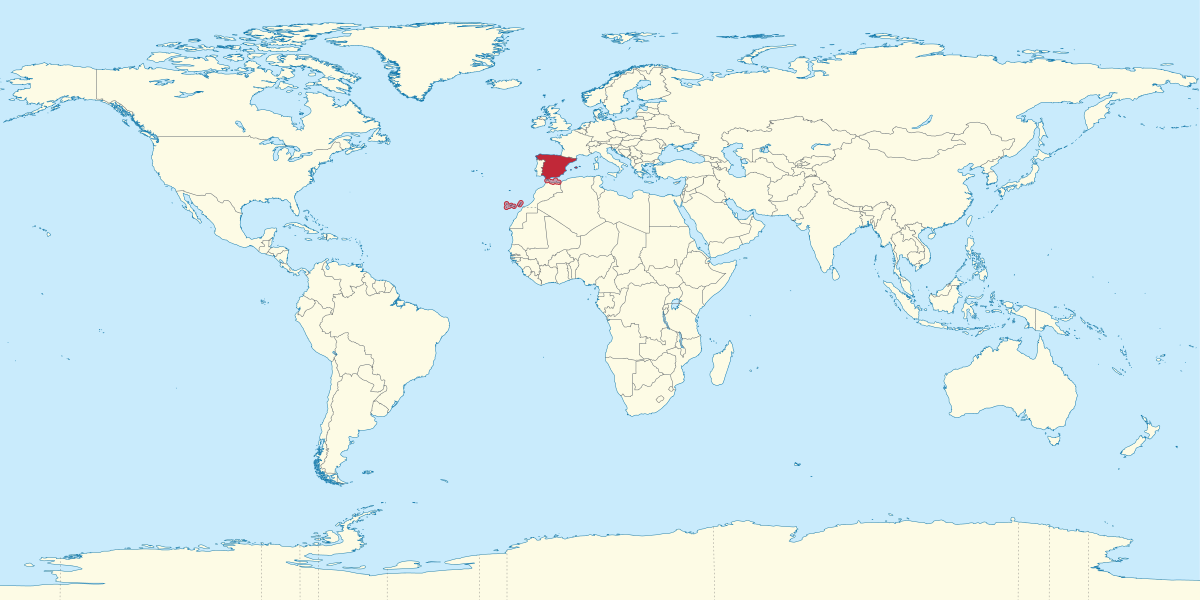
Spain has around 46.5 million inhabitants. Spanish is the official language, but not the only one. There are three other languages that are co-official in their corresponding autonomous regions: Catalan in Catalonia, Valencia and the Balearic Islands; Euskera in the Basque Country and Navarre, and Galician in Galicia. Both Catalan and Galician, like Spanish, are Romance languages, that is, they can trace their origins back to Latin. However, Euskera is an isolate language, which means linguists have not been able to connect it to any other living language and cannot figure out its origins.
Spain has been a parliamentary monarchy since 1975, after nearly 40 years of dictatorship (1939-1975). The first king after Franco’s dictatorship was Juan Carlos I. Franco himself had decided that Spain would become a monarchy after his death and had appointed the young Juan Carlos as the future king, bypassing Juan Carlos’s father, the legitimate heir to the throne. After years of a generally popular reign by Juan Carlos, he was involved in some unsavoury scandals that were threatening to damage the monarchy irreparably. In 2014 he decided to abdicate in favour of his son, who became Felipe VI. Although, the ‘new blood’ has somehow strengthened the institution, it is still dealing with reputational damage from family corruption scandals, amongst other things.
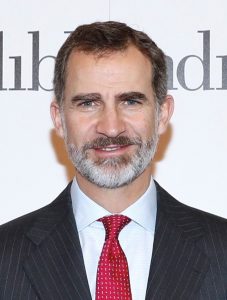
In a modern parliamentary monarchy, the monarch is mainly a figurehead. He/she is the Head of State, but he/she has no real power. He appoints the Prime Minister, but only after he/she has already been elected in Parliament. He is also the Commander-in-Chief of the Armed Forces, a role that, given Spanish history, could be more influential than that of Head of state.
The current territorial administration of the Spanish state consists of 17 autonomous regions and two autonomous cities (Ceuta and Melilla) in the north of Africa. Each autonomous region (comunidad autónoma) has its own Estatuto de autonomía which determines the powers devolved to it. At this point, autonomous regions have full control over education and health care. Aspects such as law and the economy are controlled by the State. The central government in Madrid dictates the framework within which the regions can make their own decisions. There are a few key areas where the State has absolute control: international relations, immigration, defence and the armed forces.
Each autonomous region has its own elected parliament and government. Each government is headed by a first minister (presidente or lehendakari in the Basque Country). Different ministers called consejeros hold different portfolios. Each autonomous region has its own High Court of Justice (Tribunal Superior de Justicia), although the Spanish High Court is above them. The Basque Country and Catalonia have their own police forces (Ertzaintza and Mossos d’Esquadra, respectively).
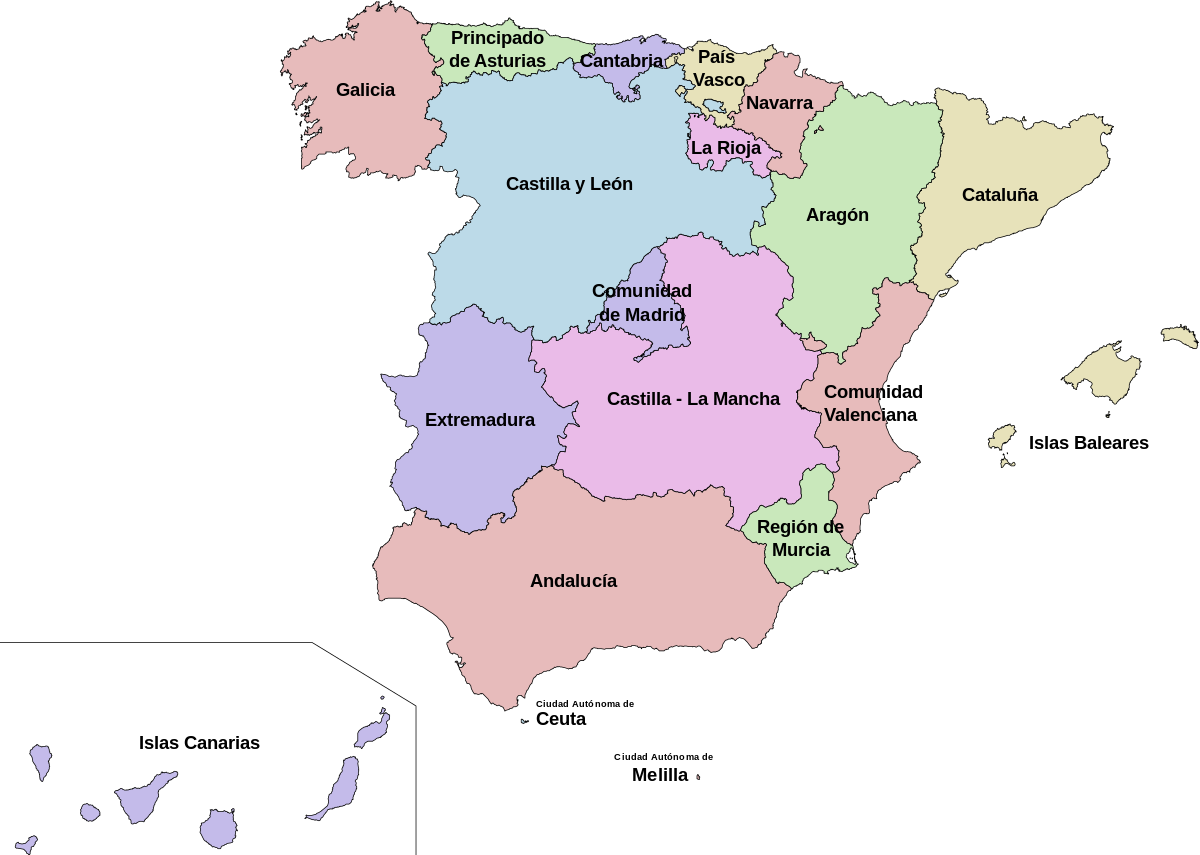
España está situada en el suroeste de Europa y es parte de la península ibérica junto con Portugal, al oeste; Andorra, al norte; y Gibraltar, un pequeño territorio británico, en el sur. También son parte del estado español las islas Baleares, en el mar Mediterráneo, y las islas Canarias, en el océano Atlántico. Dos ciudades en el norte de África son también españolas. Se llaman Ceuta y Melilla. El reino de España está formado por 17 comunidades autónomas y dos ciudades autónomas (Ceuta y Melilla). Cada una tiene su propio parlamento, gobierno y presidente. Todas tienen las competencias sobre educación y sanidad. En otros aspectos tienen que tomar decisiones según el marco establecido por el gobierno de Madrid. Las cuestiones internacionales, inmigración, defensa y Fuerzas Armadas son competencia exclusiva del Estado.
Hay unos 46,5 millones de habitantes en España. Se hablan cuatro lenguas oficiales. El español o castellano es oficial en todo el estado. El catalán es cooficial en Cataluña, Comunidad Valenciana e islas Baleares. El euskera es cooficial en Euskadi (Comunidad Autónoma Vasca) y Navarra. El gallego es cooficial en Galicia.
España es una monarquía parlamentaria. El actual rey se llama Felipe VI y subió al trono tras la abdicación de su padre, Juan Carlos I, debido a una serie de escándalos que estaban dañando la institución. El papel del rey es meramente simbólico.
- ► 1st country in the world in number of organ donations and transplants.
- ► 1st country in the EU in ecological agriculture.
- ► One of the top 20 countries in the world in the use of renewable energies.
- ► 3rd country in the world to legalize gay marriage.
- ► 3rd country in the world in number of foreign tourists.
- ► 3rd country in the world with largest number of UNESCO Heritage Sites.
- ► 4th country in the world in life expectancy.
- ► Has a language with no relation to any other language in the world: Euskera (Basque).
CULTURAL RESOURCES
FILMS (available from Netflix)
The Ministry of Time (El ministerio del tiempo, 2015) (Netflix) Series about travelling back in time to different periods in the history of Spain.
Heroes Wanted (Cuerpo de élite, 2016) (Netflix) Comedy about the different police forces in Spain and their regional stereotypical characteristics.
The Invisible Guardian (El guardián invisible, 2017) (Netflix) Thriller set in northern Navarra with references to Basque mythology.
Toc Toc (2017) (Netflix) Comedy about OCD patients.
The Warning (El aviso, 2018) (Netflix) Thriller about mysterious deaths.
Victim number 8 (La víctima número ocho, 2018) (Netflix) Fictional drama series about the investigation on a jihadist attack in Bilbao which is not what it seems.
The Next Skin (La propera pell, 2016) (Netflix) Thriller about the disappearance and return of a teenager (in Spanish and Catalan)
The Giant (Handia, 2017) (Netflix) Drama based on a real story about a man suffering from gigantism set in the 19th century (in Basque)
Errementari, the Blacksmith and the Devil (Errementari, 2018) (Netflix) Fantasy film based on a folk tale (in Basque)
1.2 SPAIN AND EUROPE
For historical reasons, Spain has often been isolated from important European events such as both world wars. This was the case during the nearly forty years of dictatorship that ruled the country after the bloody civil war of 1936-1939. With the advent of democracy in 1975, Spain wanted to become a European player, and joining the then EEC (European Economic Community) was paramount. This finally happened in 1986, after protracted negotiations with the EEC member states of the time. Spain and Portugal joined at the same time and became the 11th and 12th countries to do so. Nowadays, the EU has 28 members (Brexit pending). Spain, due to its size and economic status, has a certain degree of influence in the EU apparatus; but far from that of the great influencers like Germany and France. Within the EU, Spain is one of the 19 states that have the euro as their currency (Eurozone). It is also part of the Schengen agreement, adopted by 26 European countries, not all of them members of the EU, like Switzerland. At the same time, not all EU member states are part of Schengen, e.g. the Republic of Ireland and the United Kingdom.
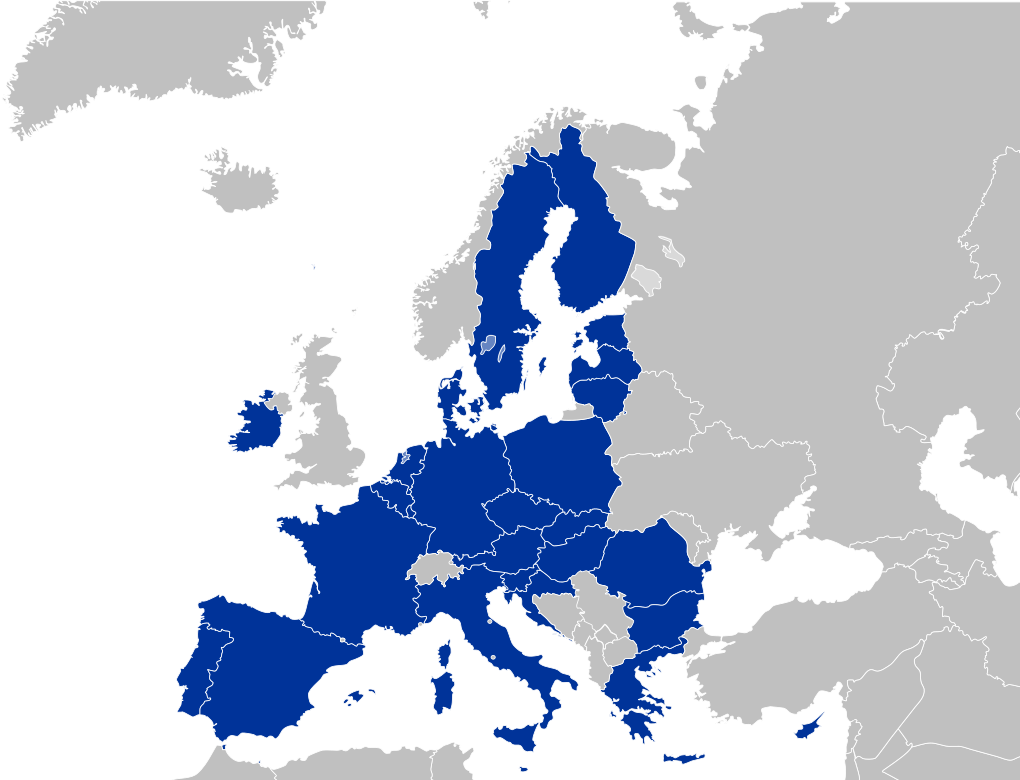
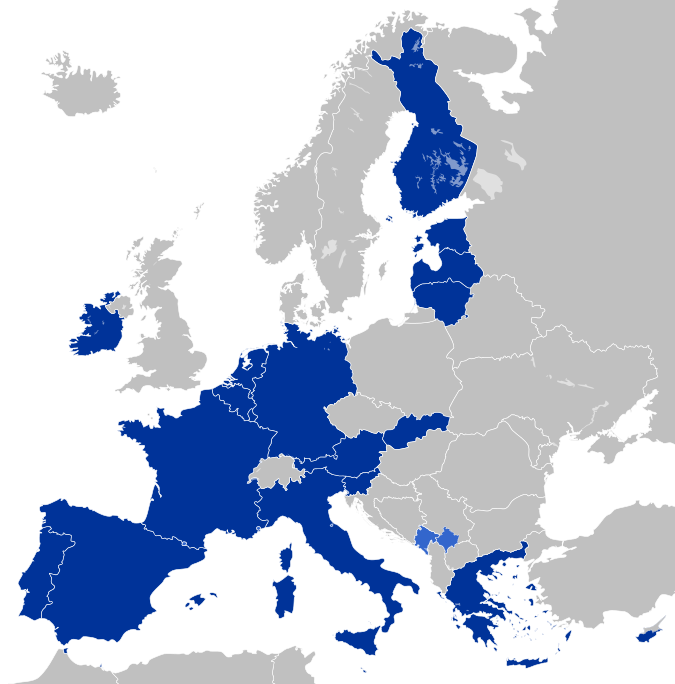
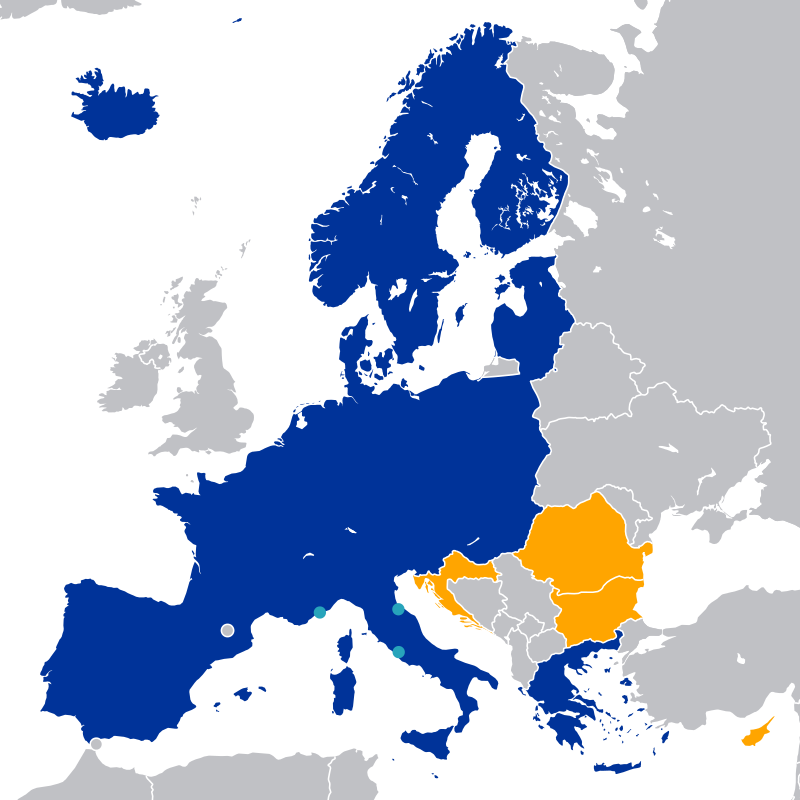
La dictadura de Franco, que duró casi 40 años, aisló a España del resto de Europa. España ingresó en la Comunidad Económica Europea (el anterior nombre de la Unión Europea) en 1986, junto con Portugal. España tiene cierta influencia en la UE, debido a su tamaño y peso económico, pero no está entre los países con más poder, como Alemania y Francia. Es también miembro de la zona euro, es decir, su moneda es el euro. Además, es parte de los países dentro del Tratado de Schengen, que permite la libre circulación de personas y mercancías entre los estados miembros.
1.3 SPAIN AND AFRICA
Spain is part of the European continent, but its geographical proximity to Africa has played and still plays an important role in its history. The southernmost tip of Spain is only 14 kilometres away from the northernmost tip of the African continent. Also, the Canary Islands are closer to Africa (95 kilometres) than to Europe (1,400 kilometres).
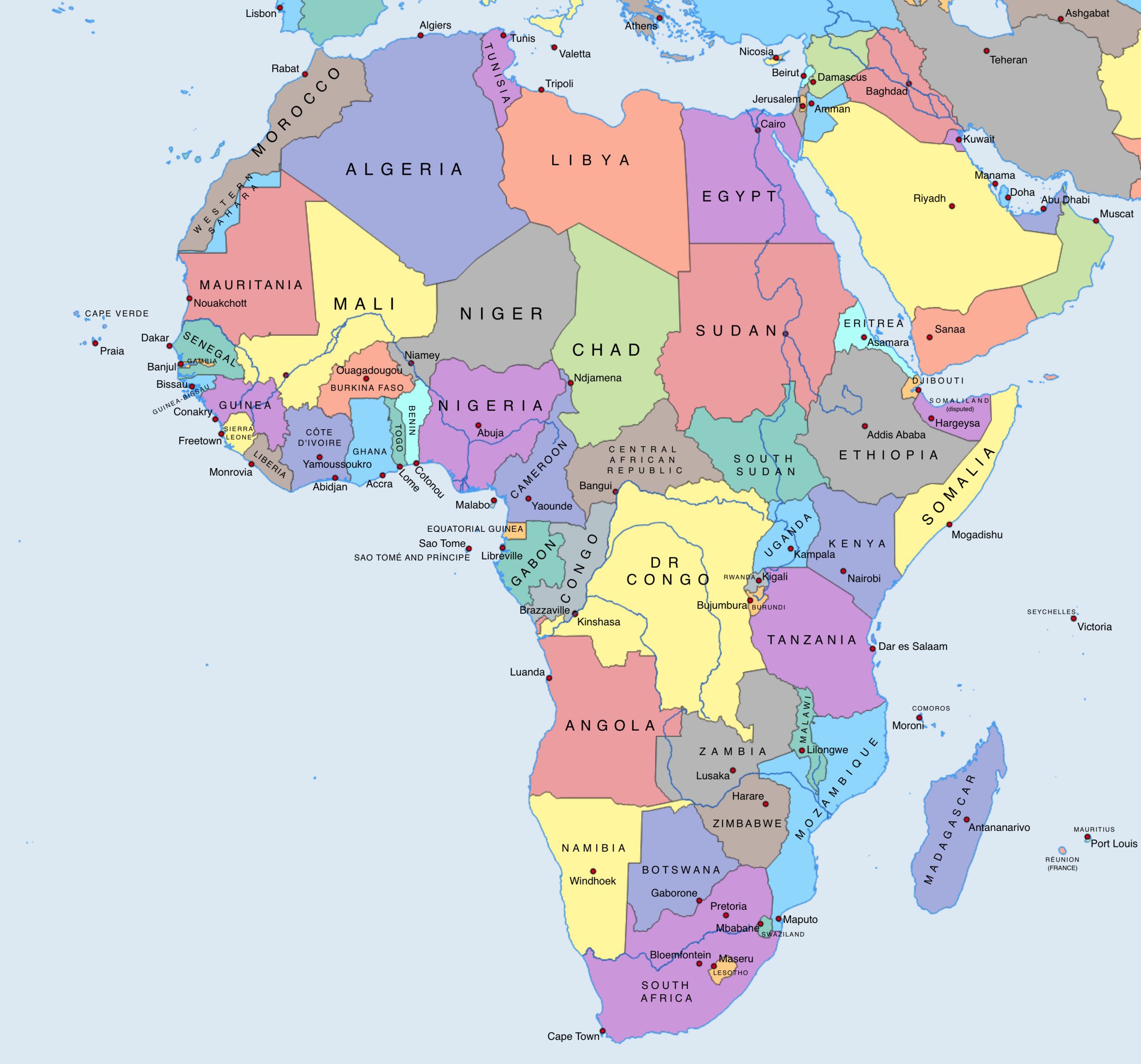
This geographical circumstance made it possible for recently Islamised Berber tribes to cross the Straits of Gibraltar in 711 and start the occupation of the Iberian Peninsula. The internecine fights for power within the Spanish Visigoth kingdom at the time facilitated a swift expansion of the Moors, as they are known. After a long and arduous conquest of the Muslim territories in Iberia by Christian kings and warriors, the last Moorish enclave in the peninsula (the kingdom of Granada) was captured in 1492 by the troops of Queen Isabella of Castile and King Ferdinand of Aragon.
For centuries Arab culture permeated the original culture in the peninsula and became part of it. It is still present in hundreds of place names, including cities like Albacete, Alicante, Almería, Badajoz, Jaén, Madrid, Valladolid; rivers, Guadalquivir, Guadiana, and mountains, Almanzor, Mulhacén. Obviously, Portugal also has place names influenced by Arabic such as Algarve and Lisbon. Thousands of words in Spanish come from Arabic, amongst them many high-frequency terms such as aceite (oil), algarabía (din, racket), almohada (pillow), barrio (neighbourhood, district), hazaña (feat, achievement), jinete (horse rider), nácar (mother-of-pearl), ojalá (I wish), rehén (hostage), rincón (corner), sandía (watermelon), zanahoria (carrot); not to mention words that have also enriched other European languages such as English: alcohol/alcohol, álgebra/algebra, berenjena/aubergine, jirafa/giraffe, lima/lime limón/lemon, naranja/orange, sorbete/sorbet.
Their influence in architecture is visible amongst the most impressive monuments in Spain: the Alhambra of Granada, the Mosque of Córdoba, the Aljafería palace in Zaragoza. The characteristic colourful tile decoration we associate with certain parts of Spain and Portugal is also an Arab legacy.
CULTURAL RESOURCES
The Canary Islands, off the northwestern coast of Africa, were finally conquered by Spain in the 15th century. These islands are now considered an integral part of the Spanish state and make up one of the 17 autonomous regions.
Spain incorporated territories in the north of Africa to its expanding empire since the 16th century, when Melilla and later Ceuta became part of the Spanish Crown. Like the Canary Islands, these two cities are also considered part of Spain, although diplomatic frictions with Morocco, which considers them part of its territory, have strained relations between both countries for decades. These cities are also EU territory in north Africa and, consequently, attract large numbers of illegal immigrants who attempt to enter Europe through these enclaves. Spain’s relationship with Morocco is nothing but complex. Apart from the frictions caused by the ownership of Ceuta and Melilla, Spain’ fishing fleet relies on Moroccan fishing grounds. Immigration policies between both countries are far from clear. Morocco is also a competitor when it comes to produce such as fruit and vegetables. Beyond Morocco, Spain is heavily dependent on gas from Algeria and Libya.
In a Franco-Spanish treaty in 1912 Spain acquired a small territory known as the Spanish Protectorate of Morocco, which became independent in 1956. A newly re-structured Sahara became a Spanish province from 1958 to 1976 after international negotiations. In the 70s Spain agreed to hold a referendum for the Sahrawi to decide on self-government. It never materialised. This territory, now known as Western Sahara, was invaded by Morocco taking advantage of the fact that the dictator Franco was dying. A few months later, once Franco was dead and Spain was facing an uncertain future, Spain abandoned the province to its fate. A 16-year long war ensued between Morocco and the Polisario Front (the Sahrawi liberation movement). The conflict remains unsolved and many Sahrawi people live in refugee camps in Algeria.
CULTURAL RESOURCES
Further south in Sub-Saharan Africa, the Spanish Crown took possession of the territory known nowadays as Equatorial Guinea from Portugal in 1778. It was a Spanish colony under the name of Spanish Guinea until 1968, when it became independent. This is now a tiny country with around 700,000 inhabitants which has endured a long dictatorship. Although rich in petrol, its political and social context still hinders its capacity to prosper. Spanish is one of the official languages.
CULTURAL RESOURCES
Voces literarias de Guinea Ecuatorial
FILM
Palm Trees in the Snow (Palmeras en la nieve, 2015) (Netflix) Romantic film about Equatorial Guinea before and after independence.
España está situada muy cerca del continente africano. En su punto más próximo solo hay 14 kilómetros de distancia. Sin embargo, las islas Canarias están a más de 1.000 kilómetros de distancia.
En el año 711 tribus bereberes cruzaron el estrecho de Gibraltar e invadieron la Península. El último territorio musulmán en España fue conquistado por las tropas de los Reyes Católicos, Isabel de Castilla y Fernando de Aragón, en 1492, el mismo año en que Colón llegó a las Américas. Los llamados moros o árabes influyeron en la lengua española, las artes, la agricultura y la ciencia.
España y Marruecos tienen problemas diplomáticos debido a Ceuta y Melilla, que Marruecos considera suyas. Además, España necesita el permiso de Marruecos para poder pescar en las aguas marroquíes, esenciales para la industria pesquera española. Además, muchos inmigrantes ilegales entran en territorio español desde Marruecos a través de Ceuta y Melilla. Marruecos hace la competencia a España en productos agrícolas tales como verduras y frutas. España también depende de otros países africanos, como Argelia y Libia, de los que importa grandes cantidades de gas.
Hasta 1975 España tuvo una provincia en África, el llamado Sáhara español. En 1975 Marruecos invadió este territorio y España, inmersa en el duro proceso de la Transición después de la muerte del dictador Franco, prefirió abandonarlo. Los saharauis siguen luchando por su independencia. Muchos de ellos viven en campos de refugiados en Argelia.
En el África subsahariana España tuvo una colonia, Guinea española, que se llama Guinea Ecuatorial desde su independencia en 1968. El español es una de las lenguas de este pequeño país de 700.000 habitantes, gobernado por una larga dictadura.
1.4 SPAIN AND AMERICA
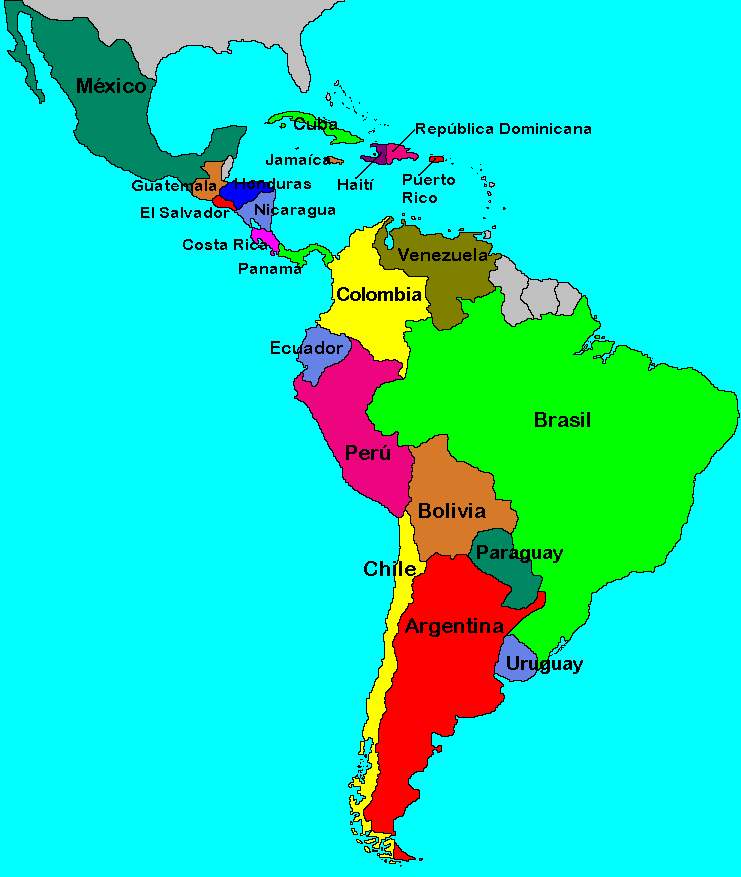
Spanish as a native language is spoken by around 480 million people around the world. Most of them live in the American continente: Argentina, Bolivia, Chile, Colombia, Costa Rica, Cuba, Ecuador, El Salvador, Guatemala, Honduras, México, Nicaragua, Panamá, Paraguay, Perú, República Dominicana, Uruguay, Venezuela. We could include Puerto Rico in this list; however, it is not an independent country, but an associate state of the US.
Christopher Colombus and his men, on an enterprise funded by the Castilian Crown, disembarked in the Americas in 1492. Most Spanish American territories became independent countries by 1830. The last Spanish colonies in Latin America, Cuba and Puerto Rico, got their independence from Spain in 1898.
The relationship between Spain and 18 Spanish American countries is marked both by strong linguistic and cultural ties and a deep resentment caused by a colonial past and violent wars of independence. The cultural links are reflected in the continuous exchanges of music, literature and cinema between both regions. Latin American music bands and singers are increasingly popular in Spain, and vice versa. Spanish actors take part in Latin American films and TV series, and Latin American actors are becoming better known in Spain. The typical Latin American soap operas known as culebrones populate the late afternoon TV programme schedule. Literature written in Spanish from all these countries is widely read and studied in universities all over the world, and also translated into other languages.
CULTURAL RESOURCES
The resentment between Spain and Latin America was clearly present in 1992 during the celebrations of the quincentenary of Colombus’s arrival in America. Most Latin American countries did not mark the occasion and made a point of showing their disapproval of the colonial enterprise. This colonial spectre was also awakened when Spanish multinationals such as Telefónica, Repsol and Santander started to invest in Latin American countries in the 1990s.
Migratory flows have linked Spain to Latin America since the beginning of the colonial period. During the economic boom in Spain from the second half of the 1990s until the economic crisis in 2010. 2,4 million Latin Americans settled in Spain. More recently, many young Spaniards have emigrated to Latin American countries in search of work since the crisis hit Spain.
The Spanish language is also present in the US, spoken by an estimated 35 million native speakers. Even if it does not have any official status, its importance is clearly visible in the media.
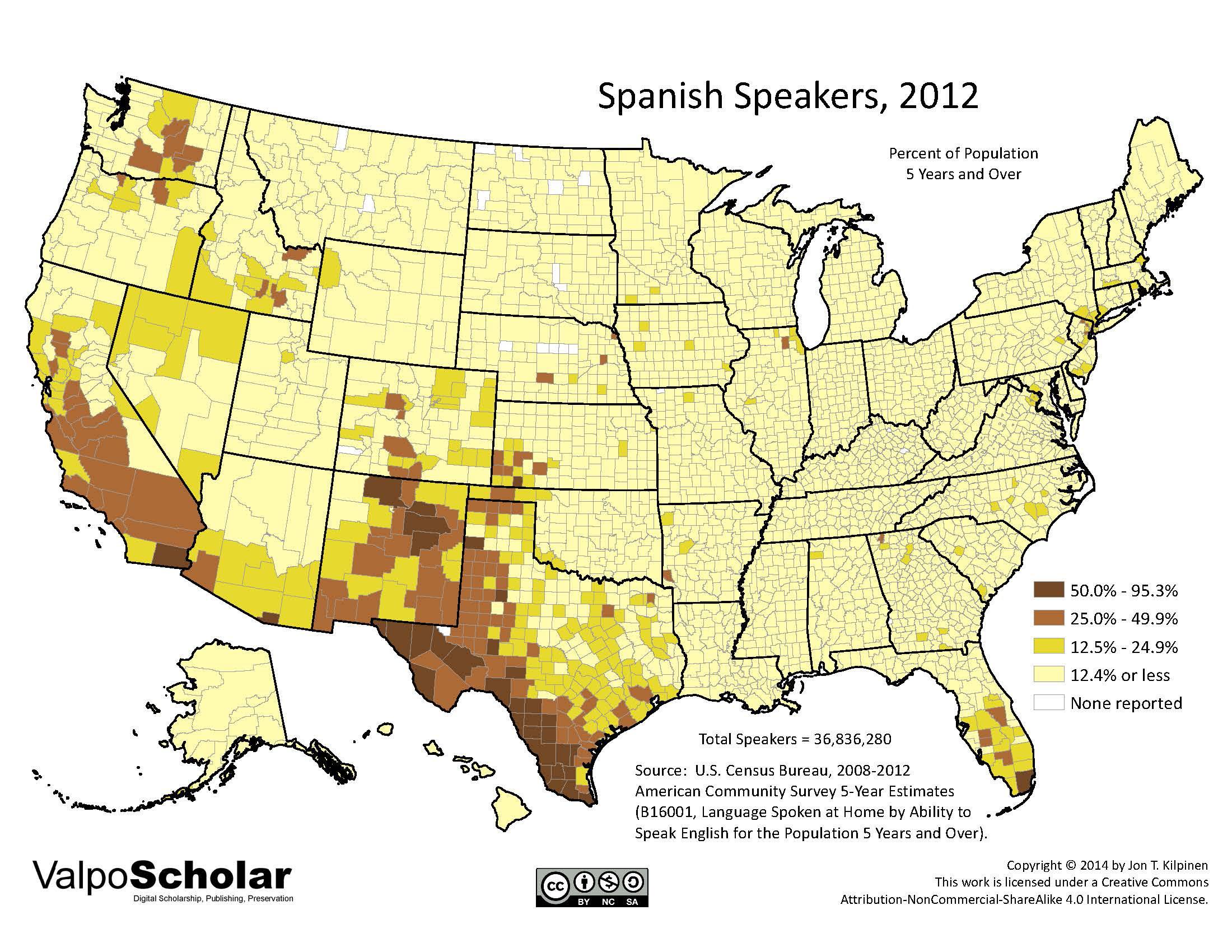
The relationship between Spain and the US did not start on a good footing. When the last Spanish colonies in America (Cuba and Puerto Rico) and the Philippines and Guam in the Pacific rebelled against the Spanish government in 1898, a very young US seized this opportunity to flex its military muscle against a declining Spain and, in the process, acquire some extra territories of its own. Cuba and the Philippines got their independence from the US in 1901 and 1946, respectively. Puerto Rico is still part of the US, but it never achieved full state status within the union. Guam, an island in Micronesia in the Western Pacific Ocean, also belongs to the US.
After World War II Franco’s Spain was shunned by international powers since the dictator had sided with Germany and Italy, even if Spain did not enter the war. However, the Cold War situation made the USA change its attitude towards Franco and start to view him as a valuable anti-communist ally. In the 1950s the USA launched an aid programme to help Spain, an impoverished country following the civil war (1936-1939) and years of economic self-subsistence. In exchange, Franco allowed the USA to set up four military bases on Spanish territory. Two of them are still active.
In more recent times, the relationship between both countries has fluctuated depending on which party was in power in Spain. In 2003, when the US and Britain embarked on a military campaign against Iraq ignoring the UN’s precepts and general international public opinion, the centre-right People’s Party government in Spain joined in contributing a few thousand troops. On March 11th 2004, three days before a general election was due, several bombs exploded in trains in Madrid and killed 199 people. The PP government manipulated the information to blame the Basque separatist organization ETA for the attack. The next day the attack was claimed by a jihadist group. The unpopularity of the military cooperation with the US and Britain and the manipulation of information regarding the Madrid attack costed the PP the election. Once the government was in the hands of the Socialist Party PSOE, the troops were immediately recalled, damaging the diplomatic relationship with the US.
The linguistic and cultural influence of the US is clear. Spanish has adopted many words from English in recent times and most films and TV series consumed in Spain are American.
SOME WORDS FROM ENGLISH USED FREQUENTLY IN SPANISH
airbag blog bloguero/a (blogger)
chatear (to chat online) cliquear (to click) e-mail
gai (gay) hacker sándwich (sandwich)
reality show ticket Wifi (Wi-Fi)
480 millones de personas hablan español como primera lengua. La mayor parte de los hispanohablantes está en América Latina. En 1492 Cristóbal Colón y su tripulación llegaron al nuevo continente. Hacia 1830 la mayoría de las colonias americanas se habían convertido en países independientes. En 1898 España perdió sus últimas colonias en América: Cuba y Puerto Rico, que pasaron a manos de Estados Unidos.
Los 18 países de habla hispana en América y España están unidos por fuertes lazos lingüísticos y culturales. La literatura, el cine, la televisión y la música viajan entre los dos continentes. Sin embargo, también hay un resentimiento de América Latina hacia España por el pasado colonial. Por ello, muchos países latinoamericanos no celebraron el quinto centenario del ‘descubrimiento’ de América en 1992. También hay cierto resentimiento hacia las multinacionales españolas que se han establecido en Latinoamérica desde mediados de los años 90.
Siempre ha habido movimientos migratorios entre España y América Latina. Durante el boom económico de los 90 y la primera década del siglo XXI, casi dos millones y medio de latinoamericanos vinieron a trabajar a España. Durante la reciente crisis económica muchos jóvenes españoles decidieron ir a países latinoamericanos a buscar trabajo.
En Estados Unidos hay 35 millones (y probablemente más) de hispanohablantes, aunque el español no es un idioma oficial allí. Las relaciones entre España y EEUU han sido problemáticas desde un principio. En 1898 EEUU apoyó los movimientos de independencia de las últimas colonias españolas: Cuba y Puerto Rico, en el Caribe, y Filipinas y Guam, en el océano Pacífico. España y EEUU se enfrentaron en una guerra, que destruyó la armada española, y EEUU tomó posesión de esos territorios.
A veces las relaciones entre ambos países han sido más cordiales. Franco permitió a Estados Unidos tener varias bases militares en territorio español durante la Guerra Fría, dos de ellas continúan activas. En 2003 el gobierno español, en manos del partido de centro-derecha PP, mandó tropas a Irak para apoyar a EEUU y Reino Unido en su proyecto de invadir el país y cambiar el régimen, a pesar de las protestas ciudadanas en contra. El 11 de marzo de 2004, tres días antes de las elecciones generales, hubo un ataque con bombas en varios trenes en Madrid que causó 191 muertos. El gobierno culpó a la organización separatista vasca ETA del ataque, pero al día siguiente se descubrió que había sido un ataque yihadista. La intervención española en Irak, a la que se oponía la mayoría de los españoles, y la manipulación de la información sobre la autoría del ataque en Madrid le costaron al PP las elecciones. El nuevo gobierno socialista retiró las tropas españolas de Irak. Esto causó problemas diplomáticos con el gobierno estadounidense.
Como en el resto de los países del mundo, la influencia de la cultura norteamericana se puede ver en España también. Hay palabras del inglés que se usan habitualmente y la mayoría de las series televisivas y películas que se ven son norteamericanas.
1.5 SPAIN AND THE PHILIPPINES
The Philippines was a Spanish colony from 1564 to 1898. This archipelago is named after Philip II, who reigned in Spain in the 16th century at the peak of the Spanish Empire. In 1898, the Philippines became a US colony until achieving independence in 1946. Spanish is not an official language in this country; however, the Filipino language is peppered with Spanish terms (around 2,000). Many Filipinos have Spanish surnames. Spain’s greatest influence in these islands is the Catholic religion, which is firmly rooted in modern Filipino culture and life.
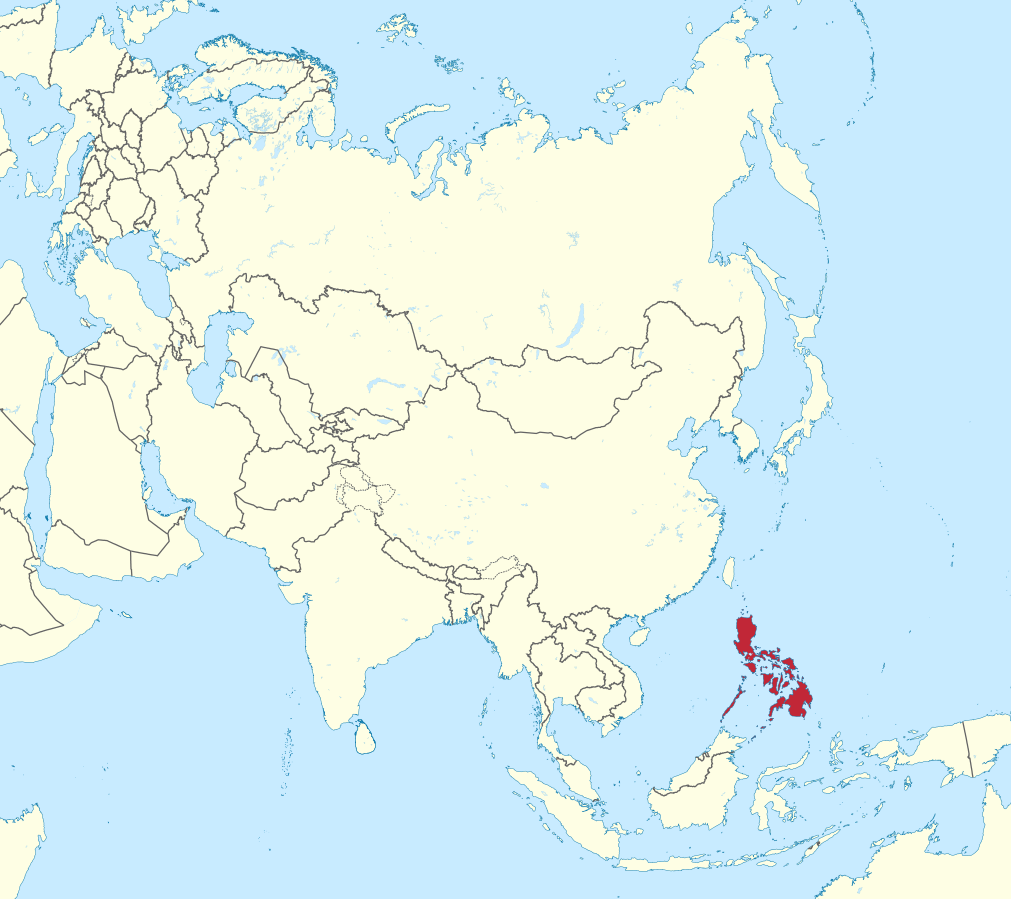
CULTURAL RESOURCES
FILM
1898, Our Last Men in the Philippines (1898 Los últimos de Filipinas, 2016) (Netflix) Historical drama about the last stand of a few Spanish soldiers to defend a garrison against Filipino revolutionaries.
Filipinas fue una colonia española desde 1564 hasta 1898, cuando pasó a manos de los Estados Unidos hasta 1946. Su nombre viene del rey español Felipe II, que reinó en el siglo XVI. En la actualidad la influencia española se puede ver en palabras españolas en la lengua filipina y en la importancia de la religión católica en el país.
Media Attributions
- Spain_in_the_World.svg
- 1020px-EU27-2020_European_Union_map.svg
- Eurozone_countries.svg
- Map_of_the_Schengen_Area.svg
- Paises_de_America
- Spanish in the US_2012
- Philippines_in_Asia_(-mini_map_-rivers).svg
